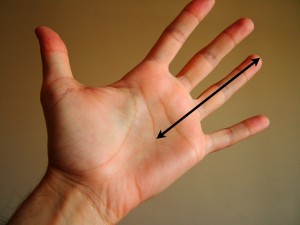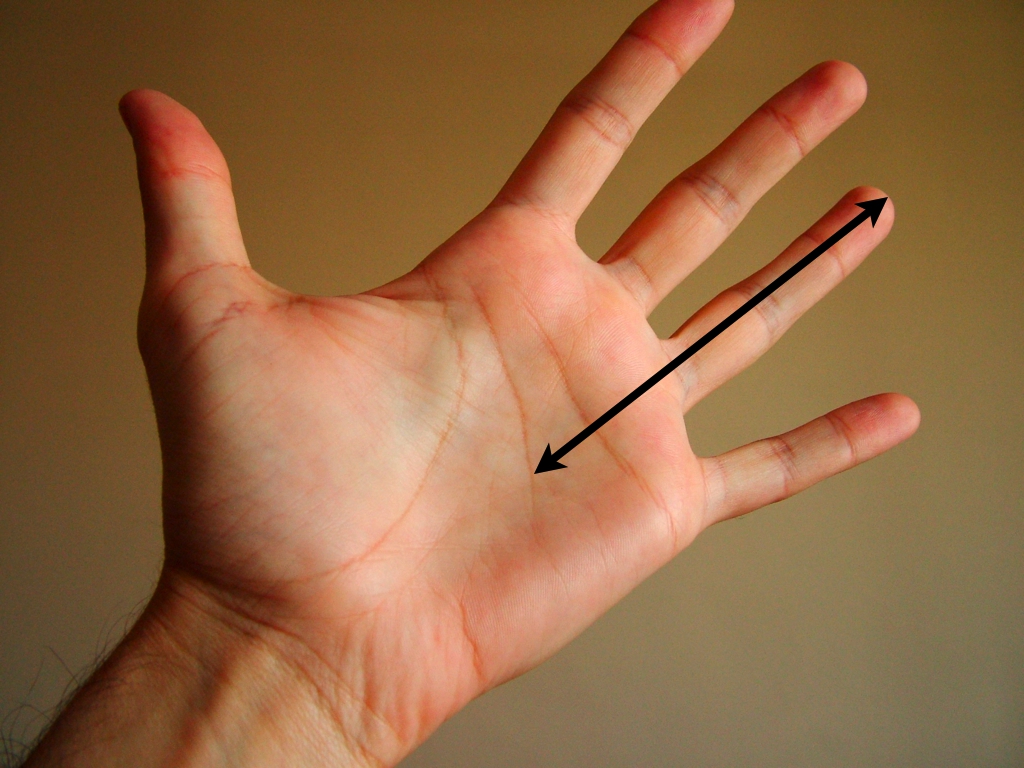Get a grip!!!
 I read a FaceBook post today where a teaching pro was basically proclaiming the virtues of using smaller grip sizes and they were chastising others telling them to stop recommending larger grip sizes for junior players. After all, Federer and Nadal both were using smaller grip sizes. So, for the recreational players out there, let’s take a closer look at this.
I read a FaceBook post today where a teaching pro was basically proclaiming the virtues of using smaller grip sizes and they were chastising others telling them to stop recommending larger grip sizes for junior players. After all, Federer and Nadal both were using smaller grip sizes. So, for the recreational players out there, let’s take a closer look at this.
First and foremost, why measure for grip size to begin with? The reason is to insure stability in the racquet. If the grip is too small the racquet will twist (torque) in the players hand on off-center hits. If the grip is too large the player is going to have a terrible time holding onto the racquet at ball impact, whether a clean hit or off-center hit. Improper grip sizes have also been known to cause problems in the wrist and hand as well so there are a number of reasons why a good racquet technician will work with a player to locate the grip size that works best for that individual player.
Now, let’s point out the obvious in the coaches analasys. Junior players are NOT Roger Federer or Rafa Nadal – period. Drawing comparisons between juniors and pro players is certainly not a sound approach. That would be tantamount to saying that just because you use the same racquet as Federer that you’re going to be able to play like Federer-NOT!!! A closer look and maybe I can explain why this “coach” was making such a claim and then trying to justify their approach with a pro/junior comparison.


The best place to start is by explaining exactly how a proper grip size is determined. I’m sure you’ve seen the example whereby you’re asked to grip the racquet and the person then places one finger in the gap to measure the grip (see photo at right). I have found in my many years of experience that this is actually the least reliable way of measuring a grip. First, not everyone’s hands are the same shape and second, not everyone grips the racquet the same. Typically, what we’re looking for is for tip of the middle finger to line up with the first crease in the thumb when the player grips the racquet in a traditional Eastern forehand grip. That gets us pretty close to a perfect fit. I find a more reliable way of measuring this is to use a standard ruler (photo top left) and measure from the tip of the ring finger to the second crease in the palm of the hand. However, it’s also been my experience that with some people, the creases in their palm are not readily identifiable so it’s hard to take an accurate measurement. The point here is that you should at least ask your adviser to measure you for proper grip size, whatever method they choose to use and try to get yourself fitted for something that works best for you.
Let’s get back to the coaches assertion of using a smaller grip and make a few points. Smaller grips do actually allow the player to be more “wristy” by creating less restriction in actual wrist movement. Think about other racquet sports such as racquetball, badminton & squash. If you compare grip sizes in those sports you’ll see that they are significantly smaller than in tennis. You’ll also see that in each of those three sports the stroking motion is definitely pronounced by snapping the wrist to generate power. Smaller grip sizes also allow for less stability in preventing the racquet from twisting on off-center hits. If you pay close attention the next time you play tennis and are at the net hitting volleys you might just find that anything that’s not centered perfectly on the strings will cause the racquet to twist in your hand. The same thing applies when facing a big server and you can’t quite get the racquet centered on the ball during your return. Both are a very a good indication that the grip is too small. Remember too, that hand strength plays a role in this too. The coaches comparison to pro players was off base because players like Federer and Nadal are much stronger than a junior player and their training regime only adds to their strength in all areas of the body. The same case can be made for adult recreational players, especially women with smaller physiques who are not as strong as some of the men they may be competing against.
In summation, it’s always a good idea to visit with a professional racquet technician who is properly trained and can address every aspect pertaining to you and your racquet. The kid down the street might be able to put string in your racquet for 5 bucks but they will never match the skills and expertise a trained racquet technician can bring to the table. That’s a classic example of the old adage “you get what you pay for”.


Leave a Reply
You must be logged in to post a comment.